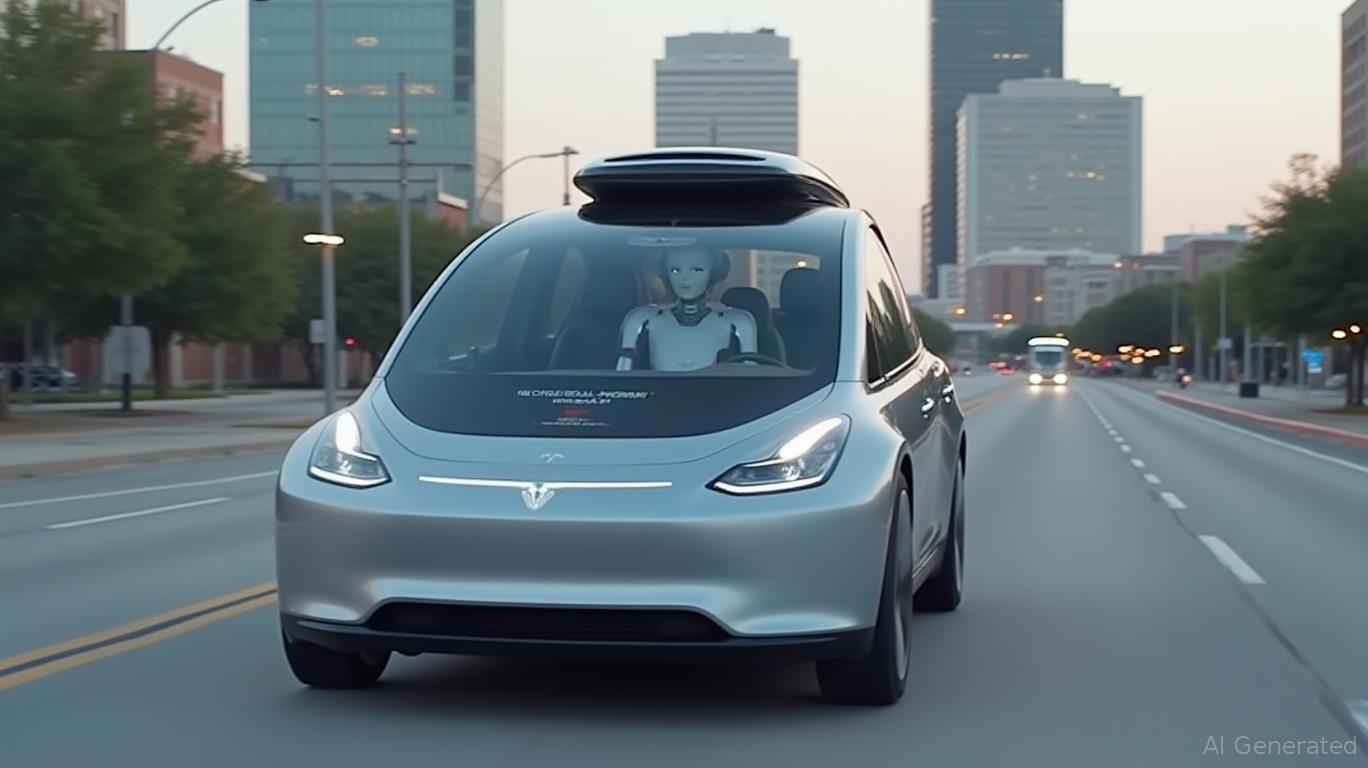Tesla's 2025 Stock Outlook: Riding Regulatory Winds or Stumbling on Execution?
The electric vehicle (EV) revolution is far from over, but Tesla's path to dominance is increasingly fraught with execution risks that could offset its regulatory tailwinds. As 2025 unfolds, investors face a pivotal question: Is Elon Musk's vision of autonomous taxis, AI-driven innovation, and climate-friendly policies enough to sustain Tesla's stock—or will mounting challenges like eroding market share and regulatory uncertainty derail its trajectory?

Regulatory Tailwinds: Musk's Political Pivot and Autonomous Tech Promises
Tesla's potential upside hinges on two key catalysts: Elon Musk's political influence and the commercialization of autonomous driving.
Musk's Political Ties: Musk's alignment with the Trump administration's Department of Government Efficiency (DOGE) has sparked both controversy and speculation. While his lobbying efforts may help streamline regulations for autonomous vehicles, his political entanglements also invite scrutiny. A would reveal how markets react to Musk's public engagements.
Autonomous Tech and Robotaxis: Tesla's plan to launch Unsupervised Full Self-Driving (FSD) and commercial robotaxis in Austin by June 2025 is a narrative goldmine. If successful, this could redefine Tesla's valuation, as autonomous mobility could command premium pricing. However, show that execution delays often penalize stocks.
Execution Challenges: The Triple Threat of Market Share, Carbon Credits, and Competition
Despite Musk's vision,
faces three critical execution hurdles that could cap its stock performance:- Declining EV Market Share:
- In China, Tesla's deliveries fell 20% year-over-year in Q1 2025, while BYD's global EV sales surged to 17 million units annually.
- In Europe, Tesla's sales dropped 50% YoY in key markets like Germany and France due to aggressive pricing by rivals like MG and Volkswagen.
would starkly illustrate its erosion of leadership.
Carbon Credit Dependency:
- Tesla's Q1 2025 carbon credit revenue of $595 million offset an operational loss of $186 million, but this lifeline is shrinking. Q2 2025 carbon credit sales fell 49% to $344 million, a trend that could worsen if U.S. regulators relax emissions rules.
underscores its precarious reliance on this subsidy-driven income.
Competitive Pressures:
- BYD's affordable EVs and battery innovations, alongside Waymo's advances in autonomous tech, are compressing Tesla's margins.
- Trade tensions with China—Tesla's second-largest market—add geopolitical risks to cost structures.
Investment Strategy: Wait for Q2 Data and Regulatory Clarity
The path forward demands a disciplined “wait-and-see” approach:
- Hold Fire Until Q2 Deliveries: Tesla's Q2 2025 delivery data, due in July, is critical. A rebound to 450,000 units would signal demand resilience, while a repeat of Q1's 336,000 deliveries would amplify bearish sentiment.
- Monitor Regulatory Shifts: Watch for U.S. policy changes on carbon credits and autonomous vehicle regulations. Musk's ability to navigate these could mean the difference between a $100 billion upside and a $50 billion markdown.
- Focus on Fundamentals, Not Hype: Investors should prioritize operational metrics like gross margins (now at 2.1% in Q1 2025) and cash flow over Musk's Twitter-era theatrics.
Conclusion: Tesla's Stock Is a High-Reward, High-Risk Gamble in 2025
Tesla's stock is a mirror of its duality: a visionary disruptor battling execution pitfalls. While autonomous tech and regulatory tailwinds offer long-term promise, near-term risks—from declining deliveries to carbon credit volatility—are too significant to ignore.
For investors: Avoid chasing the stock now. Instead, wait until Q2 delivery data and regulatory clarity emerge in July. Only then can you assess whether Tesla's fundamentals justify its valuation—or if it's time to bet on the next EV leader.
Final Advice: Tesla's 2025 story isn't over yet. Stay patient, track the data, and let execution—not Elon's tweets—dictate your moves.

Comments
No comments yet